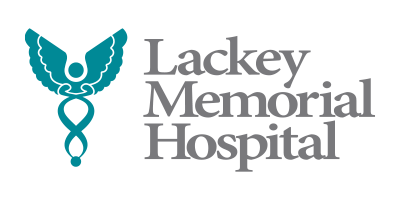The state’s most trusted name in orthopaedics is now available here in Forest.
Lackey Memorial Hospital has partnered with Mississippi Sports Medicine and Orthopaedic Center to better serve the residents of Scott County. Certified Family Nurse Practitioner Megan McDaniel has specialized training in Orthpaedics and Pain Management. So, if you or a loved one suffers from ongoing pain or an orthopaedic injury, Megan stands ready to help.
Our clinic can secure expedited patient appointments with Mississippi Sports Medicine and Orthopaedic Center providers.
Pain Management
Pain management is defined as the treatment strategies used to reduce or reverse the effects of pain in order to improve quality of life. As a medical specialty, pain management can take many forms. Treatment is often a collaborative effort between many medical specialists and a patient’s primary care provider — which allows us to treat a patient’s pain and the underlying medical cause of that pain.
Pain Assessment
The first step in the effective management of pain is to properly and thoroughly assess the nature of the pain, its extent, and its most likely cause. We have many tools at our disposal for pain assessment, including detailed interviews, numbered or visual scales, and external and internal imaging techniques. Identifying any neurological, muscular, and motor impairments can also be helpful in assessing pain.
Pain Management Strategies
Many kinds of pain management strategies may be recommended to a patient, depending on the kind, severity and complexity of the pain experienced.
Some strategies include:
• Pharmacological Therapy: This pain management strategy includes any treatment of pain with drugs, such as normal analgesics and painkillers, but also dermal patches, ointments, anticonvulsants, muscle relaxers and more.
• Interventional Therapy: This pain management strategy centers around intervening between the area of the body causing the pain and the patient’s brain, usually through blocking nerve impulses by way of an injection or pump. Interventional therapies are minimally invasive but are usually reserved for cases when pharmacological therapy proves insufficient.
• Alternative Therapy: This pain management strategy includes roughly any treatment that does not fit the other categories, such as nerve stimulation. Electrical stimulation of the spinal cord or peripheral nerves in order to ‘override’ the pain signals being delivered has been shown to be a viable route to alleviate or even eliminate pain in some cases. As another example, Botox® has sometimes been used to temporarily degrade the connection between muscles and nerve cells and can have a positive effect on patients with migraines, headaches and neck pain.
Conditions We Treat
We provide treatment across the full pain continuum, from the least invasive treatments to complex interventional therapies. Lackey Pain Clinic takes patients by referral and self-referral.
Arm / Leg Pain
• Cervical Radiculopathy
• Lumbar Radiculopathy
Chronic Back / Neck Pain
• Spinal Stenosis
• Post-Laminectomy Syndrome
• Thoracic Outlet Syndrome
• Spondylolisthesis
• Facet Joint Syndrome
• Lumbar Radiculopathy
• Osteoporosis
Compression Fractures
• Osteoporosis
Degenerative Disc Disease / Discogenic Pain
• Degenerative Disc Disease
• Herniated Disc
Facet Joint Syndrome
• Facet Joint Syndrome
Herniated Disc
• Herniated Disc
Hip Pain
• Bursitis of the Hip (Trochanteric Bursitis)
Myofascial Pain / Fibromyalgia
• Fibromyalgia
Pain due to Arthritis
• Rheumatoid
• Osteoarthritis
Complex Regional Pain Syndrome
Shingles and Post-Herpatic Neuralgia
Types of Cancer Pain
Workers’ Compensation-Related Injuries
Chronic Pain
Facial Pain
• Trigeminal Neuralgia
Difficult Headaches
Nerve Pain
• Carpal Tunnel Syndrome
• Peripheral Neuropathy
Other Painful Syndromes
• Whiplash
• Phantom Pain
Referrals:
A patient’s primary care provider often makes referrals to Forest Orthopedics and Pain Management, but patients can also call directly to schedule appointments.
If you have pain that is affecting your daily life, call us at Forest Orthopedics and Pain Management for an appointment at 601-333-2373.
Our clinic is located at 504 Airport Road, Suite C, Forest, Ms 39074

